mRNA and All Other Vaccines Destroy Zeta Potential of the Blood Flow
Some thoughts on how improving zeta potential may help vaccine injured
This post is not providing any medical advice. I have been researching this topic for several months now, mostly out of personal interest, but I believe these findings may help many people, including potentially those injured by vaccines, hence I am sharing my thinking on this topic.
I live at high altitude in Sierra Nevada mountains, in a very dry climate, and I mountain bike at high altitude typically between 6500 and 9000 ft. I am a healthy 54, I take no meds, eat well and exercise regularly, but I started noticing that some strenuous bike rides which I had no difficulty completing before, became more challenging. There were other minor nuisance issues like stuffy nose and peripheral edema when hiking, which are all considered “normal”, but were quite annoying to me. After looking at various possible aspects, I zeroed in on hydration. While I have been routinely drinking adequate volume of water, turns out water is not the only aspect of hydration. The human body maintains an extremely fine-tuned state of homeostasis, which relies on stable flow of blood and other fluids, and the stability of this flow is ensured by something called “zeta potential”.
I was previously somewhat familiar with the concept of zeta potential as it applies to contact lenses - it is one of the quality parameters which, if not quite right, will start accumulating proteins on the lens surface causing cloudiness. People with diminished zeta potential will get protein accumulation on contact lenses even when the contact lens itself is perfect. Recently a friend reported that increasing intake of magnesium made their monthly contact lens last for 3 months, whereas before they couldn’t get even the full month out of them due to protein accumulation.
Long story short, I found a company called Zeta Aid and have been testing their anionic surfactant product (ZetaAid crystals, a magnesium-potassium blend) which makes alkaline water for about 6 weeks. I can report that it produced some amazing results. I have no association with the company, so, this is not a promo, simply a report of personal experience. I found that I was in fact dehydrated despite drinking plenty of water. My acidity level was high. Within about 4 weeks of drinking purified water with anionic surfactants per instructions of ZetaAid, I started beating my previous personal mountain biking records with ease, and overall my biking stats have gone up about 20%! Here is an example of the speed of one of my frequent rides over time:
I also sleep better and in general feel like I have more energy. Other issues like stuffy nose and itchy watery eyes which I chalked up to “environmental allergy” and swelling of the hands also went away.
Interestingly, the founder of ZetaAid, Dr. McDaniels started his journey on developing zeta potential therapies, likewise, via encountering health issues at high altitude in Colorado. He subsequently completely reversed his condition (arrhythmia), living in perfect health to 101+ years of age (he passed away in 2016). I read the books by Dr. McDaniels offered on ZetaAid website. They are not the easiest read, but are quite informative and provide a good basis for further research into this area. My only major criticism of Dr. McDaniels’ writing is that he never mentioned vaccines as the cause of zeta potential collapse, even thought those are the easiest two dots to connect. He talks about diet and environmental pollution (Anything But Vaccines) as sources of cationic offending substances, for example, he is railing against aluminum contamination of food and water. It is true that aluminum is a strong cation and small amounts of it may pass through digestive tract into the blood. However, the vast majority of digested aluminum gets eliminated out of the body. According to ECHA (European Chemicals Agency) and US sources like ATSDR, most estimates of average gastrointestinal absorption of aluminum under normal dietary conditions fall in the range of 0.1%–0.6%, with typical values around 0.1%–0.3%. However, more bioavailable forms like aluminum citrate can be absorbed up to 0.5%–5%. Therefore, typically, 99%+ of ingested aluminum is excreted from the body. Guess which aluminum doesn’t get eliminated from the blood? The aluminum that is injected with vaccines, of course. 100% of it goes into the blood stream. Same principle I keep hammering - injection is a zillion times more dangerous than ingestion - applies here, too.
Definitions:
Zeta potential is a measure of the net electrical potential (in millivolts) carried by particles in the size range between 10 Angstroms to 10 microns. If this charge is relatively high (30 to 85 millivolts), colloids will remain separate and discrete. Agglomeration sets in at about 15 mv, and is maximum at zero mv. At low mv, colloidal substances start “salting out”, i.e. forming precipitants, depending on the substance of the colloid - crystals or other forms of agglomerated particles, such as fat or protein deposits. The negative electrical charge on the surface of blood components (cells and other particles) keeps them well separated, like smoothly flowing traffic, with no stops, traffic jams or pile-up accidents.
Colloids: The water content of the human body changes over time: in newborns it reaches 85% and in the elderly it falls to as low as 55%. But it’s not “just water”. Human body overall can be characterized as a complex aqueous colloidal system. In chemistry, a colloid is a type of mixture in which small particles are dispersed throughout a continuous medium, but do not settle out or separate over time like in a suspension. Colloids can exist in different phases (solid, liquid, or gas) and common examples include:
Milk (fat and proteins in liquid)
Fog and Clouds (liquid in gas). Note, while the establishment science claims that the atmosphere is not a colloid and is “only gasses”, that’s not true. The atmosphere contains water vapor and dust, making it a colloid.
Gelatin (solid in liquid)
Smoke (solid in gas)
Blood (proteins and other particles in liquid)
Surfactants: (short for surface-active agents) are compounds that reduce the surface tension between two substances—typically between a liquid and a gas, a liquid and a solid, or between two immiscible liquids (like oil and water). In blood, the surfactants carrying negative electric charge (anions) are responsible for keeping the blood components and cells separated and thus ensuring the stability of the colloidal flow.
One of the most important aspects of the colloidal systems of the human body - they are not static! They don’t sit, stand still, lie down or rest. Ever. While you are alive that is. The body and its fluids move continuously. You are not an “object”, you are not a bucket of genes or some particles floating in water, randomly assembled for unknown reasons. You are a unique, purposefully created, speaking, thinking, moving, working, creating and pro-creating, unfolding EVENT IN TIME!
If the body is thought of as a “terrain”, then the blood and fluids are waterways and the irrigation system of this terrain, designed to supply even the most remote parts of it with consistent nutrition, while cleaning out all the byproducts and toxic waste. The average speed of blood flow varies depending on the type of blood vessel: The fastest flow is in the aorta (largest artery) at approximately 30–50 cm/s (~0.7-1.2 miles/hr). Blood flows fastest in large arteries and slowest in capillaries, around 0.03 cm/s, allowing time for nutrient and gas exchange at the tissue level. Human blood is the most sophisticated fluid in the universe. It consists of numerous types of cells and constantly carries products of digestion and metabolism. Thus the arterial flow speed and its “orderliness” or stability in motion is paramount to healthy function of ALL organs: diminish or destroy the arterial flow to the organ, and you face beginning of a pathology with a cascade of events affecting all other organs and systems.
The flow of the blood with its complex components can be compared to the flow of traffic on a busy multi-lane highway. It varies throughout the day, with some peaks and lulls, however, if the vehicles are well separated, the traffic flow is smooth and stable. When there is not enough separation, i.e. too much traffic or some interruptions, like lane closures, construction or obstacles on the road, there is a potential for traffic jams and even danger of collisions and multi-vehicle pile up.
Anionic surfactants influence blood flow stability through their effects on the surface charge of the blood components, colloidal stability, and interactions with cellular components. Anionic surfactants carry a negative charge, and when introduced into the bloodstream, they increase the negative surface charge (zeta potential) on cell membranes. A higher negative zeta potential on RBCs increases repulsion between cells, reducing the risk of aggregation, clotting or precipitants of any kind in blood or other fluids, such as lipid deposits and crystallized deposits (e.g. gout or kidney stones, etc). This promotes smoother flow, particularly in microcirculation.
The Role of Zeta Potential in Homeostasis:
In the human body, homeostasis relies heavily on the regulated distribution of ions and proteins. Zeta potential, a measure of the electrical potential at the boundary layer surrounding dispersed particles in a fluid, plays crucial role in maintaining homeostasis within biological systems. It reflects the stability of colloidal suspensions, which are common in bodily fluids such as blood, lymph, and intracellular cytoplasm. In these systems, particles such as proteins, cells, and vesicles must remain evenly dispersed to function properly. A stable zeta potential helps prevent unwanted aggregation, ensuring the proper transport and interaction of these particles. Changes in pH, ionic strength, or the presence of certain diseases can alter zeta potential, disrupting these interactions and contributing to pathological states.
Furthermore, zeta potential influences processes such as nutrient absorption, cellular signaling, and immune responses.
Diminished Zeta Potential and Acidosis:
Altered zeta potential can drive inflammation and what is commonly termed “infection”, but in reality is a die-off and/or overgrowth of certain microorganisms as the body is trying to re-establish the colloidal stability or homeostasis. The inflammatory processes subsequently also alter zeta potential by changing the local chemical environment, which in turn can affect the behavior of immune cells and proteins. Acidosis is a condition characterized by an excessive accumulation of acid leading to a decrease in blood pH below the normal and tightly regulated range of 7.35–7.45. Even small deviations from this range can be dangerous or even life threatening. Note that the pH of the blood and urine are different parameters - blood pH is tightly controlled, while urine pH (which you can measure with pH strips) is highly variable, as urine is filtrated from the blood, carrying away waste products which are typically acidic.
Common Causes of Increased Body Acidity:
Diabetic ketoacidosis:
When insulin is low, the body burns fat, producing ketone bodies (acids like acetoacetate and beta-hydroxybutyrate).Lactic acidosis:
From intense exercise or oxygen deficiency; leads to a buildup of lactic acid (this was my problem which I addressed with ZetaAid).Renal failure:
The kidneys fail to excrete enough hydrogen ions or reabsorb bicarbonate, increasing acid buildup.
Hypoventilation:
Poor breathing leads to CO₂ retention, forming carbonic acid in the blood (respiratory acidosis).Seen in COPD, sleep apnea, or drug overdose.
Note that this is also seen with prolonged mask wearing. Even 30 minutes of wearing a mask can start inducing acidosis in some people, and that’s exactly why the covid planners forced mask mandates with such zeal. This is because flu and common colds are triggered by acidosis which results in the body trying to reestablish normal homeostasis, not by any traveling viruses! Fraudulent PCR tests react to pH acidity levels, and that’s why they can be triggered positive simply by drinking Coca-Cola or fruit juice.
High protein intake and low fruit and vegetable intake:
Reduces base (alkaline) buffering from minerals like potassium and magnesium. Induces keto-acidosis. This is why I am not a proponent of carnivore diets or high protein diets. They may be fine short-term for losing weight but long-term diets like this may damage kidneys.Dehydration:
Concentrates acids and reduces kidney acid excretion.Alcohol:
Especially in excess, can produce acidic metabolites and impair liver function.Starvation or prolonged fasting:
Leads to ketone production, like in ketoacidosis.Almost all prescription drugs and supplements increase acidity levels and are excreted via the kidneys, putting additional load on them.
Trace metals - extreme cationic offenders include aluminum, copper, iron, lead, manganese, silicon, tin, zinc.
The body keeps blood pH stable in a tight range to maintain enzyme activity, oxygen delivery, and cell function. It uses the urine as a dumping system to get rid of hydrogen ions (H⁺) or bicarbonate (HCO₃⁻), helping to maintain blood pH balance. The blood pH is very tightly controlled, while urine pH will vary widely during the day depending on diet and lifestyle habits and other factors. The range of 4.5 to 8.0 is considered normal for urine pH. However, constantly staying in the highly acidic urine pH levels may indicate that the system is strained and hydration and zeta potential may be affected.
Terrain and Microbiome, Desiccation, Loss of Zeta Potential and Aging.
This topic is very much lacking proper studies, so this is purely speculative reasoning. Let’s think about the body as terrain. What is terrain? It literally means “dirt” - soil, land, Earth, i.e. material and nutrient substrate for the living things to reside on. In human (or animal) body the body itself is the place where microbiome resides. Both the skin and the gastrointestinal tract (GI) constitute the surface areas of the body, which is wrapped around the GI tract to consume the water and nutrients and expel byproducts/waste.
Soil pH plays a critical role in crop growth by directly affecting nutrient availability, microbial activity, and overall soil health. Most crops grow best in a slightly acidic to neutral pH range (around 6.0 to 7.0), where essential nutrients like nitrogen, phosphorus, and potassium are most accessible to plant roots. When the soil is too acidic or too alkaline, certain nutrients become less available or even toxic. Additionally, soil pH influences the activity of beneficial microorganisms that help decompose organic matter and fix nitrogen, further impacting plant health.
In nature, aging and death manifest as gradual desiccation: plants yellow, shrink and die off, humans and animals visibly shrink and wrinkle with age. In this process of aging and death, the loss of water is not the only factor. In fact, having researched this topic so far, I can say that it is likely the loss of zeta potential of the aqueous colloid of the body that results in the loss of the total volume of water carried in the colloid - this loss results in the visible shrinking of the overall structure/body.
In both plants and humans, in the energy producing structures, such as in mitochondria the pH gradient is alkaline (7.7- 8.0) and its tight regulation is crucial for the system. Disturbances in pH (too acidic or too alkaline) accompanied by under- or -over supply of water may inhibit some species and promote others. Thriving ecosystems fed by freshwater streams have on average slightly acidic to neutral pH, just like normal soils, however dying swamps (bogs) have very high acidity levels (3.5-5.5), while not in principle lacking fresh water.
Same general principles should apply to the human body. The microbial flora present throughout human body contains aerobic and anaerobic species and they play crucial role both in health and disease. I am not an expert on gut and other microbes, but as an example, a drop below pH 5.5 in the colon can inhibit beneficial microbes and favor potentially dangerous species (e.g., Clostridium difficile).
Implications for Vaccine Injuries and Other Chronic Illness:
In a recent interview I described what happens with cationic lipids (LNPs in mRNA shots) get injected into the blood stream, comparing the effect to “toaster in the bathtub” (video clip courtesy of
on X, includes transcript). Many researchers published images and video of what happens when live blood is mixed with the mRNA shots containing cationic LNPs. The effect of mixing the injection substance with blood is immediate and dramatic - the red blood cells deteriorate, break and leak hemoglobin, multiple crystallized structures appear (precipitate out of the colloid) and white blood cells disappear. Here are some examples from researchers in Australia and NZ:For reference - this is normal blood:
RBC = red blood cells
WBC - white blood cells
Additional images by NZDSOS:
Notes from the author of the images:
The maximum mag was 1200x , including the video attachment.
This series is a drop of (vaccinated, we found months later) blood and drop of pfi adjacent on a slide, and examining where they mixed in the centre. A RBC diameter is around 7 microns.
The notable feature is obvious haemolysis of RBCs and then an extensive debris field with feathered crystalisation seemingly anchored to or from cellular debris that itself takes a form involving some symmetry around an apparent creased axis. The pics are across a span of an hour or two. Note the leaching of haemoglobin causing the background patchiness.
This process is well explained by an immediate loss of zeta potential in the blood sample, because the cationic lipids in the LNPs carry a strong positive charge. The positive charge strips the negative charge, leading literally to a train wreck in the blood. The observed crystallizing structures may be composed of numerous materials in the shots, but also may result as a “precipitant” or “salting-out” of the colloid that lost zeta potential, and then further combine and interact with the materials from the shot. Subsequently, these “scars” of the blood stream become the ignitors of the micro-clots, thrombosis and many forms of pro-inflammatory responses. Finally, in some people they initiate the wound healing response that creates permanent rubbery clots which were reported by the embalmers, which form by cross-linking fibrin with spike protein that is being expressed by the cells transfected with the vax substance. I have explained the latter mechanism in this article:
In conclusion, I believe that the topic of zeta potential of the blood flow is obviously very much suppressed part of the medical sciences. I think that looking into the existing methods of improving zeta potential of the blood is a potentially productive path for helping vaccine injured and helping chronically ill people with all kinds of conditions, and especially the cardio-renal diseases.
Art for today: Haystacks, watercolor, 6x8 in.





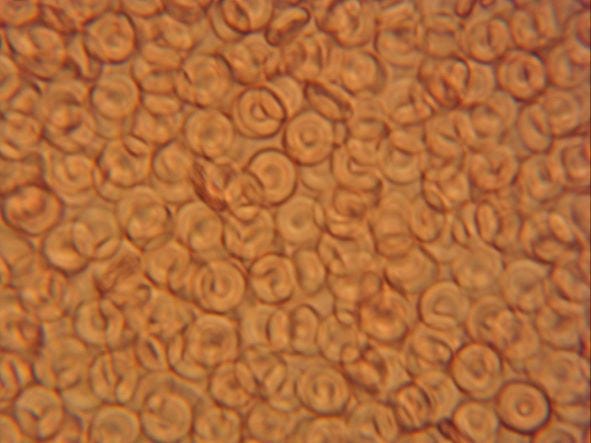
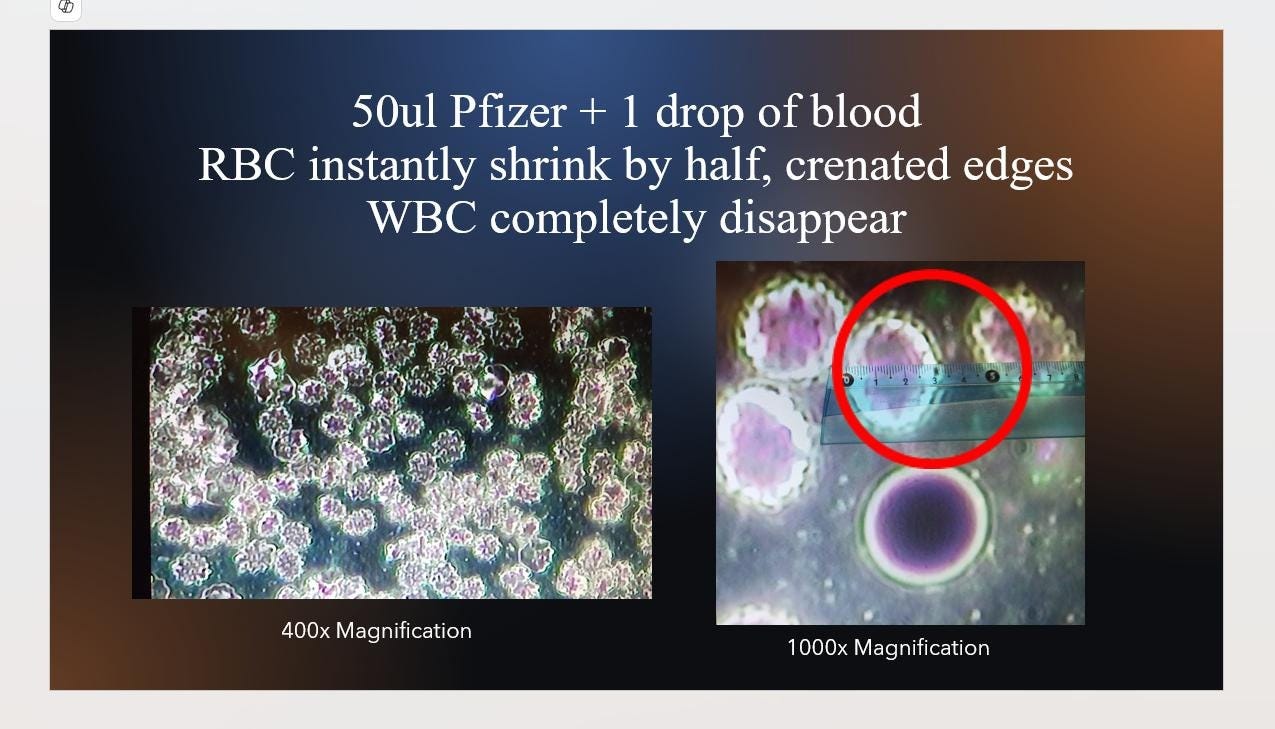

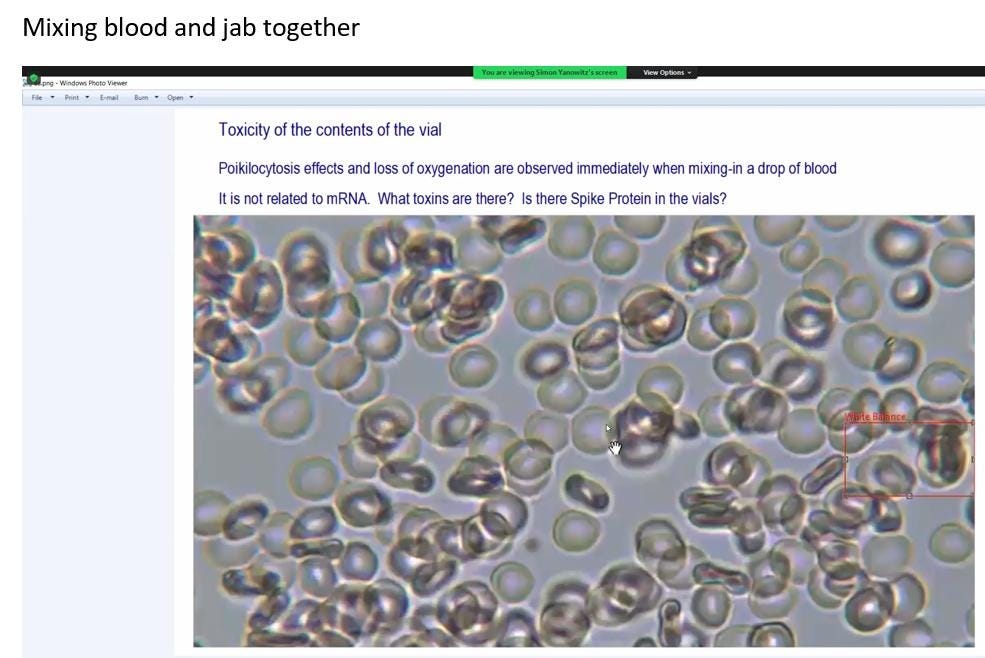
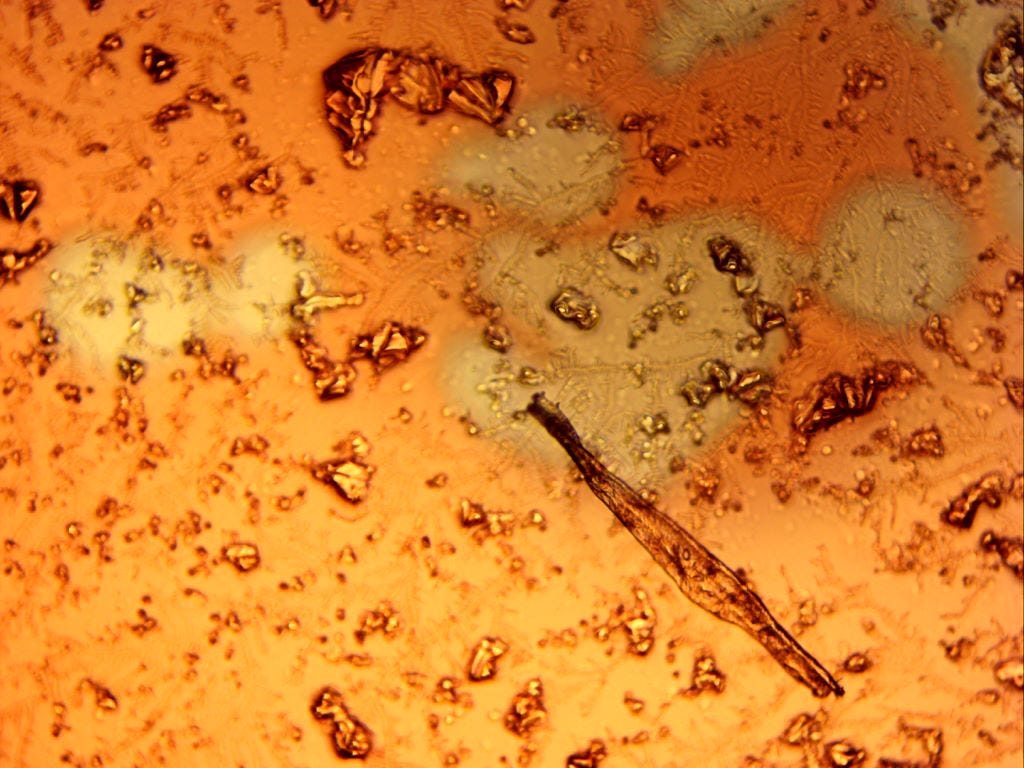
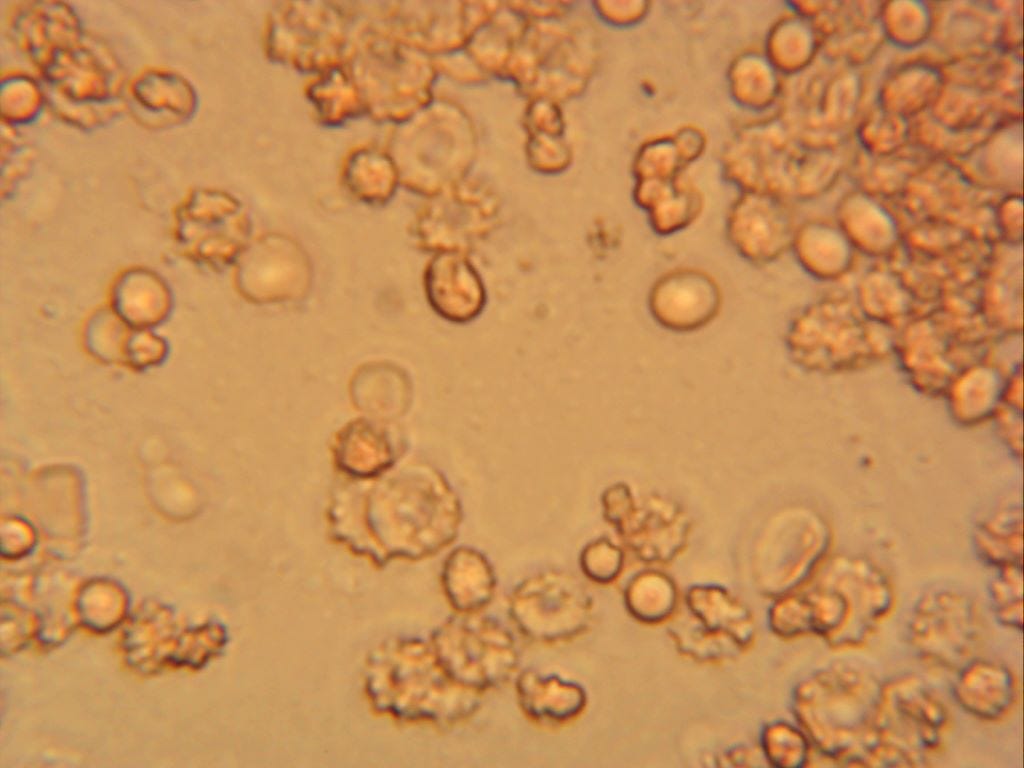
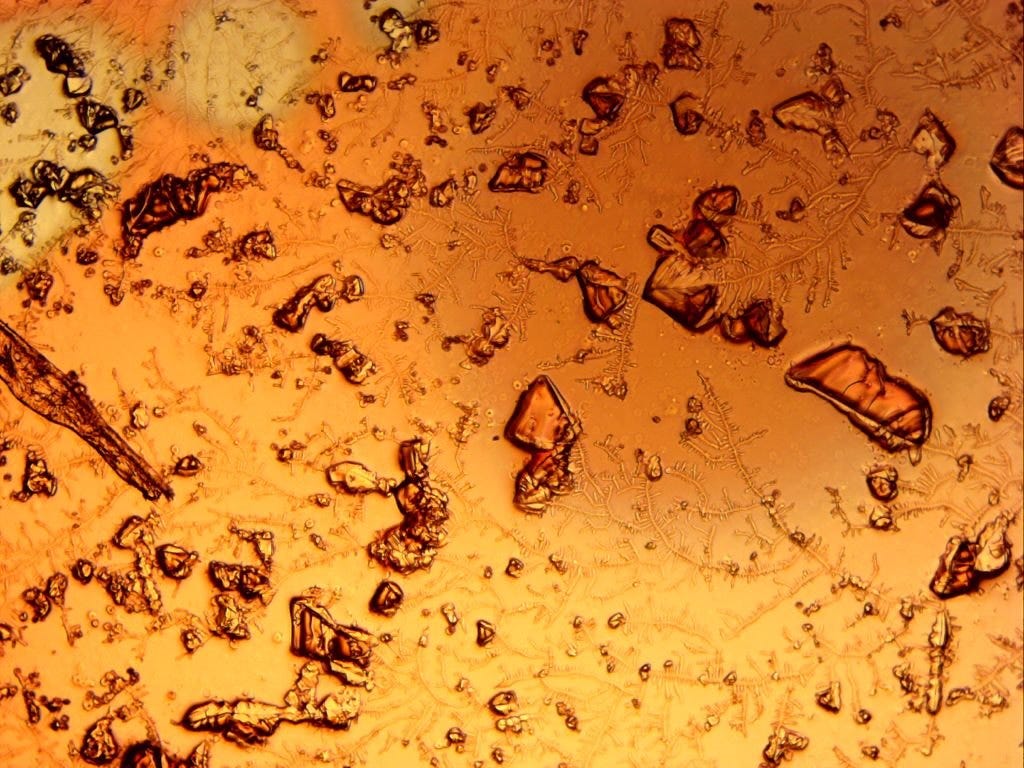


My takeaway from the article: Persons and companies providing 'vaccines' and other poisonous pharma-materials, have *very* sophisticated laboratories and equipment at their disposal. It's a wild stretch to believe these goons and ghouls are unaware of the damage done and being done...
Sasha's article parallels many investigations detailing the incredibly fine tuning and balance of anatomical systems. Let's lavishly reward corporate assholes and lab coat ghouls for mutilating and destroying the essential essence of life...
Timely and valuable as usual, Sasha. Now imagine surplus protein inside the human eye. That might present as cataracts and even a "cataracts" film on the surface of an artificial lens replacement. (Speaking from experience here.)